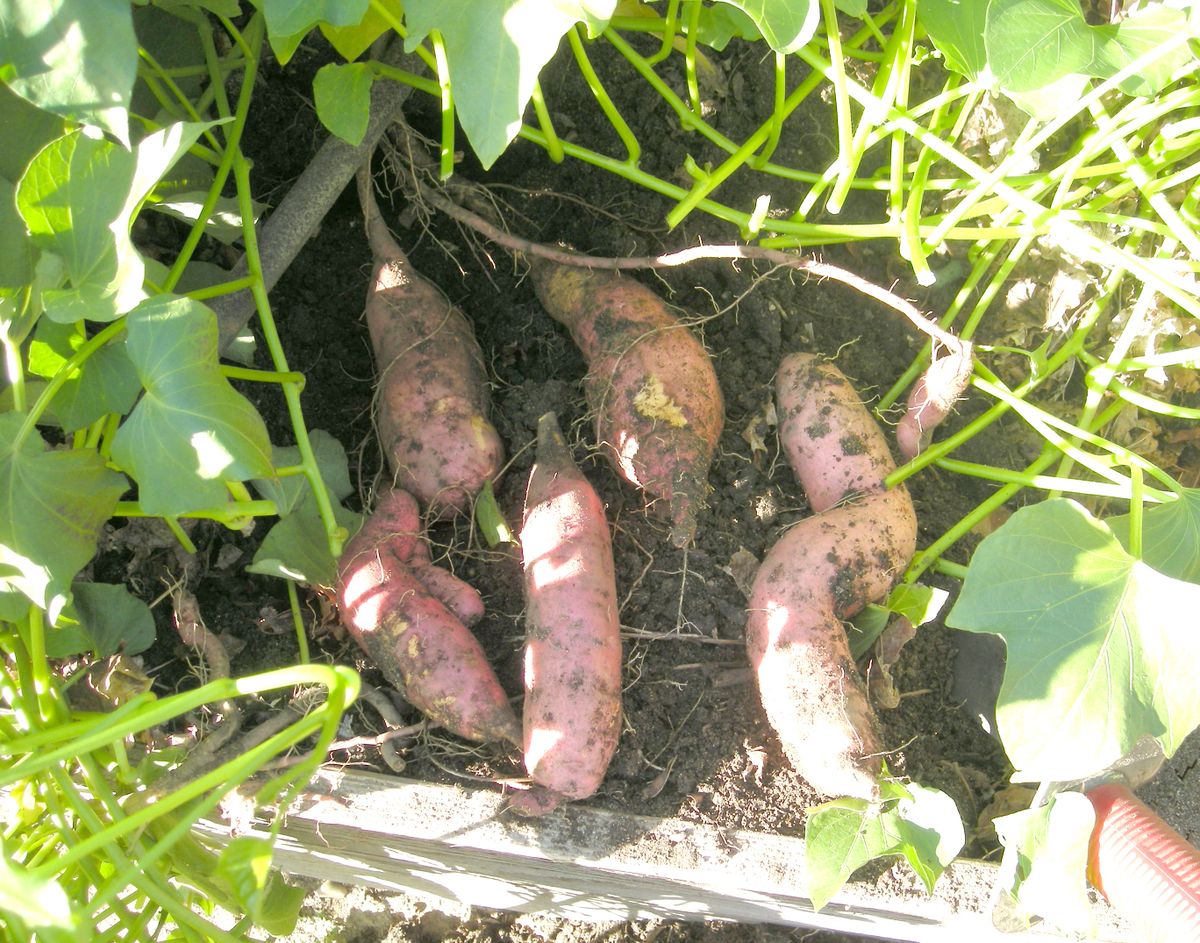Gardening: Careful strategy yields crop of Spokane sweet potatoes

Growing sweet potatoes in Spokane – everyone asks if it’s possible and the usual answer is no. Try telling that to two local WSU Master Gardeners.
Phyllis Thayer, who lives on the South Hill, and David Yarbrough, who lives in Colbert, both raised bumper crops thanks to our multiple days of 90-degree temperatures.
Sweet potatoes are planted using “slips,” or small rooted cuttings. Yarbrough ordered his from Jung Seeds, which offered a collection particularly for gardeners in northern climates. He raised Centennial, Beauregard and Georgia Jets and found that all three varieties did well.
Both Thayer and Yarbrough grew their plants in raised beds. Yarbrough covered his with black plastic prior to planting to warm the ground and then simply cut holes in the plastic to plant. He installed a drip irrigation system under the plastic. Sweet potatoes need a 100-day growing season, so warming the soil needs to be done early and the slips need to be planted as soon as all frost danger has passed.
When our early frost hit, the sweet potatoes were dug immediately, as they can’t tolerate cold. Once they are harvested, they need to be cured at 75 to 80 degrees and high humidity for seven to 10 days. Yarbrough repurposed a downstairs bathroom with a humidifier to cure his. He then wrapped the larger tubers in paper and stored them in a 55- to 60-degree place where they will keep for several months. They get sweeter in storage.
Clouds of blue ash aphids are making their annual appearance. These small, bluish-white insects appear in the fall hovering or floating over our lawns and gardens. They go by several names: conifer root aphid, blue ash aphid, Oregon ash aphid or smoky-winged ash aphid. This time of year, the winged females are moving from their summer feeding in conifer tree roots to ash trees, their winter host plant.
Scientists believe that the aphid alternates between ash and conifer trees through the year. In the spring the eggs laid the previous fall on ash trees hatch into wingless females that feed on the sap of the leaves. The all-female colony keeps growing without mating until a critical mass is reached. When this happens, winged females are produced and these females fly to the secondary host plant, members of the true fir family, for the summer. On the firs, they burrow to the roots and feed on the sap, rarely causing much of a problem for the tree. In the early fall, male aphids are produced and they mate with the winged females. The winged females then return to the ash trees to begin the cycle again the next spring.
The good news is under normal circumstances they are not harmful to most garden plants; they are just an annoyance flying around. There is nothing you can treat them with, and because they are around for only a few days it’s best to just ignore them.